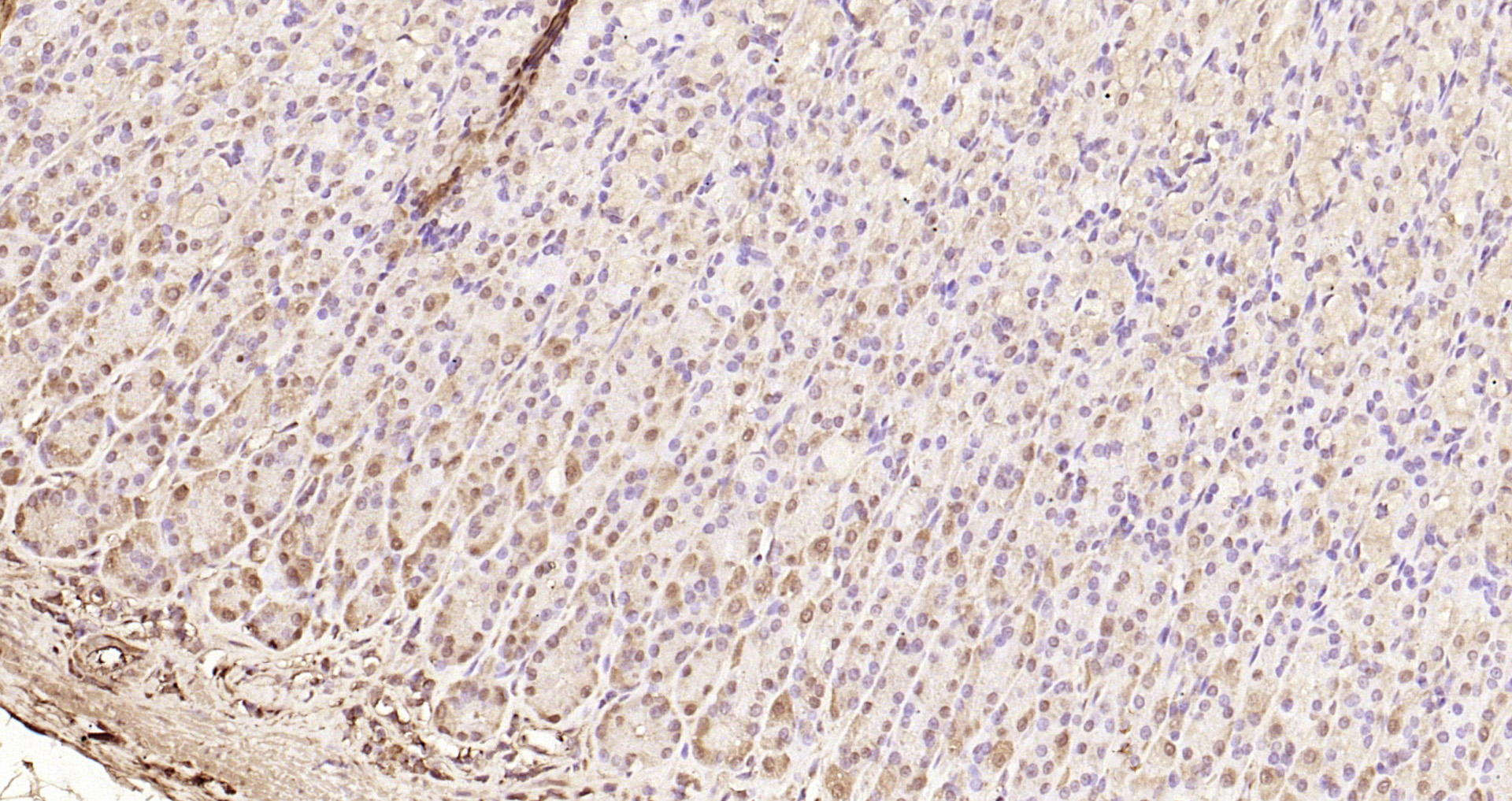
Immunohistochemistry of paraffin-embedded human heart tissue using CSB-PA615696LA01HU at dilution of 1:100
SQSTM1 Antibody
CSB-PA615696LA01HU
ApplicationsImmunoFluorescence, ImmunoPrecipitation, ELISA, ImmunoHistoChemistry
Product group Antibodies
ReactivityHuman
TargetSQSTM1
Overview
- SupplierCusabio
- Product NameSQSTM1 Antibody
- Delivery Days Customer20
- ApplicationsImmunoFluorescence, ImmunoPrecipitation, ELISA, ImmunoHistoChemistry
- CertificationResearch Use Only
- ClonalityPolyclonal
- ConjugateUnconjugated
- Gene ID8878
- Target nameSQSTM1
- Target descriptionsequestosome 1
- Target synonymsA170, DMRV, EBIAP, FTDALS3, NADGP, OSIL, PDB3, ZIP3, p60, p62, p62B, sequestosome-1, EBI3-associated protein of 60 kDa, EBI3-associated protein p60, autophagy receptor p62, oxidative stress induced like, phosphotyrosine independent ligand for the Lck SH2 domain p62, phosphotyrosine-independent ligand for the Lck SH2 domain of 62 kDa, ubiquitin-binding protein p62
- HostRabbit
- IsotypeIgG
- Protein IDQ13501
- Protein NameSequestosome-1
- Scientific DescriptionAutophagy receptor that interacts directly with both the cargo to become degraded and an autophagy modifier of the MAP1 LC3 family. Required both for the formation and autophagic degradation of polyubiquitin-containing bodies, called ALIS (aggresome-like induced structures) and links ALIS to the autophagic machinery. Involved in midbody ring degradation. May regulate the activation of NFKB1 by TNF-alpha, nerve growth factor (NGF) and interleukin-1. May play a role in titin/TTN downstream signaling in muscle cells. May regulate signaling cascades through ubiquitination. Adapter that mediates the interaction between TRAF6 and CYLD (By similarity). May be involved in cell differentiation, apoptosis, immune response and regulation of K(+) channels.
- ReactivityHuman
- Storage Instruction-20°C or -80°C
- UNSPSC41116161








